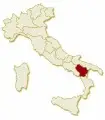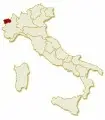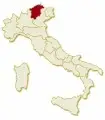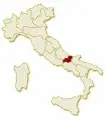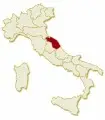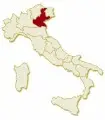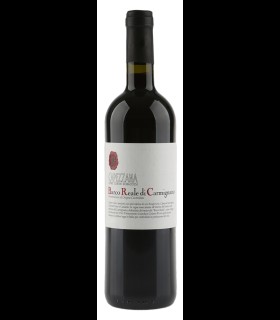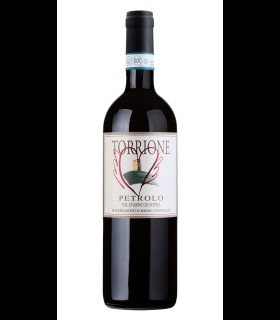Tuscany
From its origins to the present day: the evolution of Tuscan red wine
From the influences of Greek civilization through the Etruscan dominion, the vine, which was already present in Tuscany, begins to be cultivated and to play an increasingly important role in local agriculture. After satisfying the growing internal demand for delicious red wines, over the centuries Tuscany has become a point of reference for the nascent trade in wine exports. In giving a strong impulse to viticulture and above all to the fame of Tuscan red wines, first the monastic orders and then the great noble families play an important role.
The ancestors of families such as the Ricasoli, the Antinori and the Marquises Frescobaldi are fundamental in giving structure and perspective to a sector that has undergone almost constant evolution since the late Middle Ages. It is precisely towards the end of an era generally considered dark that light is shed on the first great Tuscan red wines, as can be seen from the writings that mention Montepulciano and Sangiovese. At the beginning of the fifteenth century, the first reference still known to Chianti appears, which is mentioned in a letter addressed to a merchant from Siena. From the Renaissance to the Baroque era, the sector experienced a strong growth thanks to the appreciation of the Court of the Popes, where it was possible to find the wines of Montepulciano and those of Montalcino.
An important date for the wines of Tuscany is 1716, the year in which Cosimo III de 'Medici decrees the birth of the very first denominations, in fact indicating the production areas of Chianti, Carmignano, Pomino and Valdarno di Sopra with the relative rules of application. In the following centuries, thanks to the constant innovations that are implemented in the field of viticulture, Tuscany becomes a point of reference at the national level. It holds the primacy among the Italian regions as regards the speed of response to the damage caused by phylloxera towards the second half of the nineteenth century. This is due to the attractiveness of wines such as Chianti, whose demand from consumers strongly supports the recovery of the sector. Today Tuscany continues to be a place where the potential of the vine is fully explored, as evidenced by the birth of the precious and highly sought-after Super Tuscan red wines.
Tuscan red wines: the expressions of a unique territory
One reason for the great viticultural development of Tuscany is found in the ideal soil and climatic conditions. Tuscany boasts a highly diversified landscape inside: the conformation of the morphological point of view is in fact particularly complex and presents an alternation between mountainous areas, plains, beaches, marble quarries and much more. This results in the many types of different substrates, ranging from the metalliferous lands of Monte Amiata Olga to the galestro of the central areas up to the sand of the Maremma. From the point of view of the climate, the same differences are found between the various areas: the microclimate of a single vineyard often presents a uniqueness that is influenced by the distance from the sea, the altitude, the proximity of the mountains and many other factors.
This explains the great depth of the range of Tuscan wines, which includes some of the finest reds in the world. Tuscan viticulture, which represents one of the most important items for the local economy, is mainly practiced on the hilly areas. In the course of the most recent years, very suitable areas have been identified in addition to those that have always been known, on which production has progressively concentrated with a view to continuing to improve the already recognized quality of Tuscan red wines. As a land of great reds, much of the viticulture is dedicated to red grape varieties, among which Sangiovese reigns supreme.
The Tuscan winemaking legends: the great reds
The best known area, as well as probably the most representative of the production of Tuscan reds, is the Chianti Classico. With a particularly wide extension that covers the province of Florence and Siena, it is one of the most evocative landscapes in all of Tuscany. This area boasts, in addition to many well-kept vineyards, the presence of olive trees, cypresses, holm oaks and a great variety from the point of view of fauna. An enological giant like Chianti has expanded far beyond the classic production area, so much so that today it is produced in many denominations, including that of the Aretini Hills. Chianti and Italian enology go hand in hand, telling a similar story. In fact, Chianti was originally known and distributed as a table wine that is marketed in the typical straw flask by Cantine Guidi 1929.
Only thanks to the strong research on the potential of Sangiovese, the main vine from which it is obtained, and the characteristics of each production area, today this product is one of the most renowned in the world. Another great Tuscan red wine is also obtained from Sangiovese, namely Carmignano, whose production area is much more restricted and is located north of Florence. In the beautiful town of Montalcino, an ancient Sienese village of Etruscan origin, there is an area of historical production. In fact, this is where Brunello and Rosso di Montalcino are born. It is undoubtedly the first to occupy a prominent place on the international wine scene. Born from a Sangiovese clone locally called Brunello di Montalcino, this intense and fragrant red wine has been able to amaze enthusiasts from all over the world for almost two centuries.
Tuscan red wines between history, art and research
Not far from the border with Umbria is the Val di Chiana which is home to Montepulciano, a village of Etruscan origin that has become synonymous with one of the most popular Tuscan red wines locally and nationally. Always obtained from Sangiovese, a vine known here with the name of Prugnolo gentile, the Nobile di Montepulciano represents a real excellence of this area, where Rosso di Montepulciano is also produced according to what is granted by the denomination. Still in Val di Chiana but moving towards Arezzo you can find the reds of Petraviva, modern expressions that in addition to the classic local vines also celebrate the extraordinary international Merlot grape.
On the other hand, the production area of Pomino is characterized by enormous historical value, which is located within the limits of the municipality of Rufina, already mentioned in the edict of Cosimo De Medici. Over the centuries this area has managed to remain firmly among the most important for the production of great wines, which include, starting from the most recent decades, also reds of the highest quality. Finally, in addition to the excellent Vernaccia, the beautiful town of San Gimignano near Siena stands out for the production of a red wine which includes vines such as Merlot, Pinot Nero and Syrah.
Wine in Tuscany between tradition and innovation
Among the most recent and at the same time most renowned production areas is the denomination of Bolgheri, a town located near Castagneto Carducci overlooking the Tyrrhenian Sea. Here a Tuscan red wine is produced, that is Sassicaia, ancestor of other less renowned but equally appreciated wines. The whole territory of the appellation has distinguished itself in recent years for the production of fine Tuscan red wines, thanks to the great work done on a vine such as Cabernet Sauvignon. The production of niche red wines of the Sovana doc is concentrated in the Maremma area further inland.
Moving more and more towards the south of the Maremma area you can find a real institution, namely the Morellino di Scansano. This wine, whose name represents a tribute to the breed of horses formerly used to pull carriages, is mainly obtained from Sangiovese and has always been loved for its floral notes. Among the realities that boast less historical heritage but at the same time a huge potential for the production of quality red wines, the Val di Cornia stands out. Located between Livorno and Pisa, this area overlooking the Island of Elba is able to give life to particularly interesting reds thanks to the characteristics of Ciliegiolo, a vine that lends itself to giving life to very structured wines capable of long evolutions .


